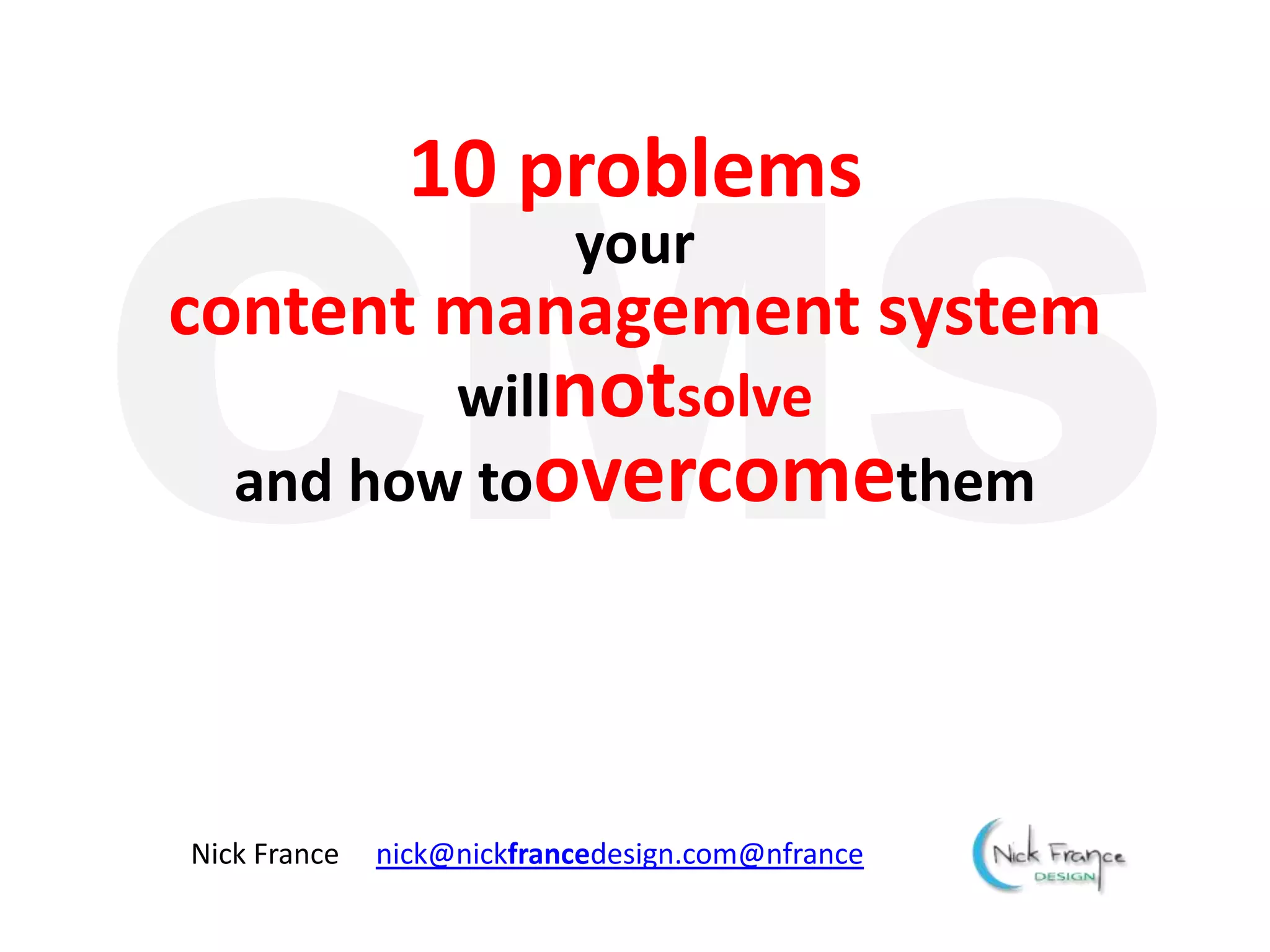This document discusses 10 problems that a content management system will not solve on its own and provides solutions to each problem. The problems include a lack of editorial control, lack of personality, uncommitted contributors, poorly trained authors, bad copywriting, bloated websites, no clear calls to action, an organizational focused information architecture, no sense of community, and single language content. The conclusion states that content management systems are valuable but not a silver bullet, and their success depends on being aware of limitations and addressing issues outside the system.













